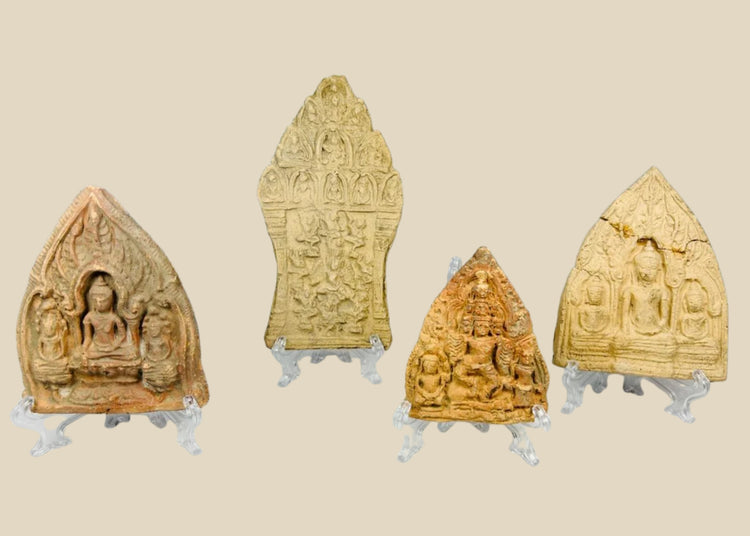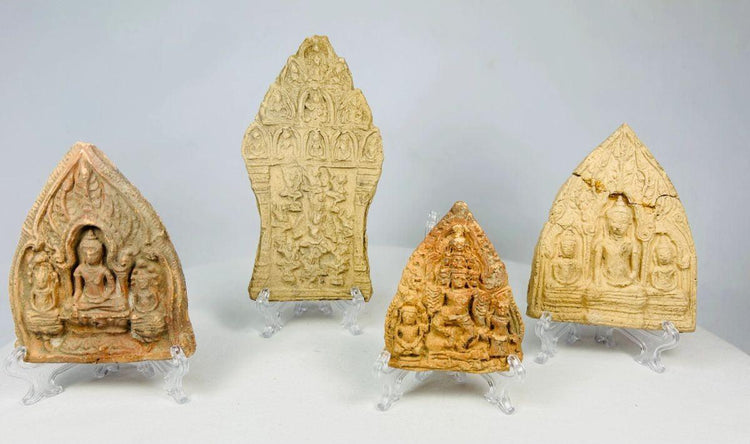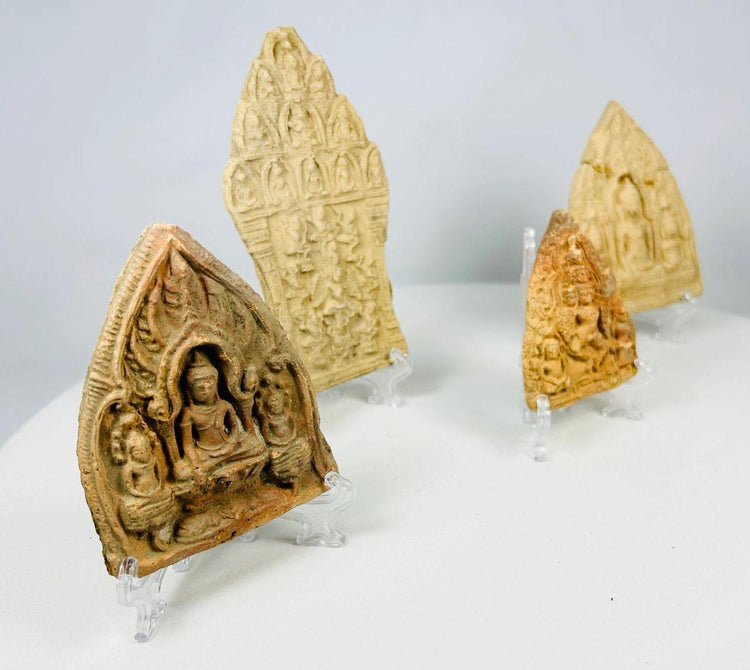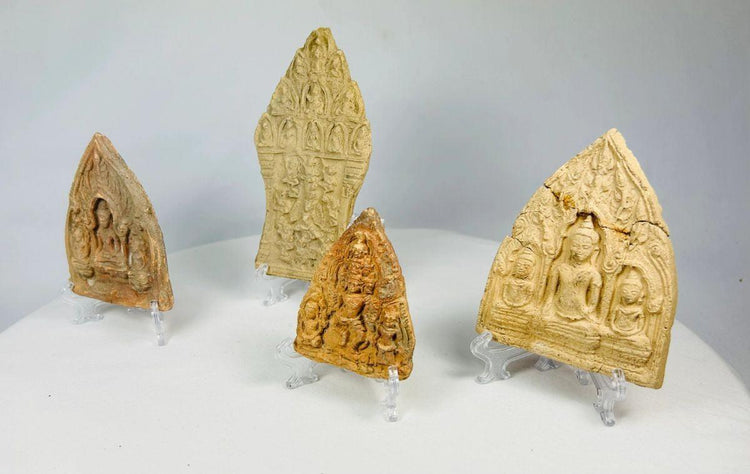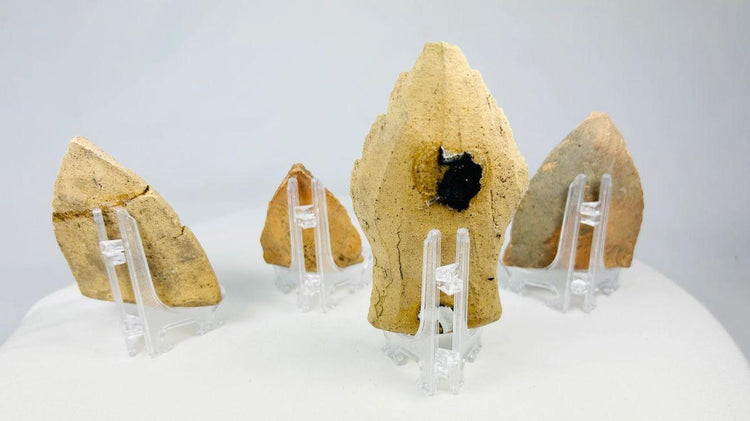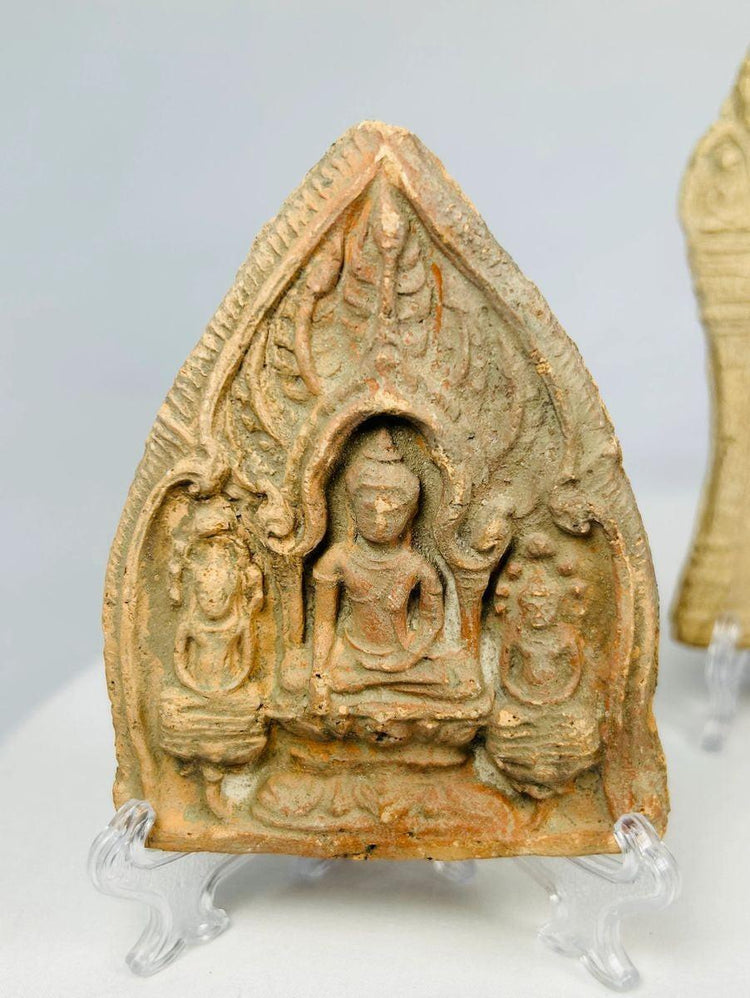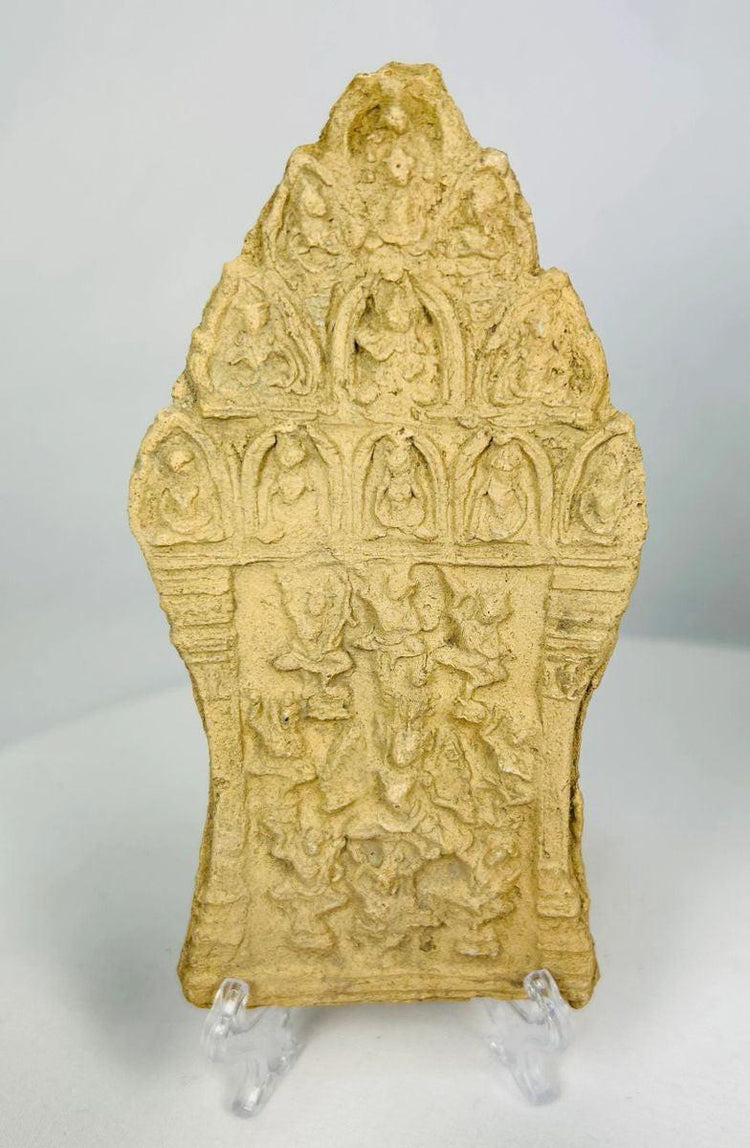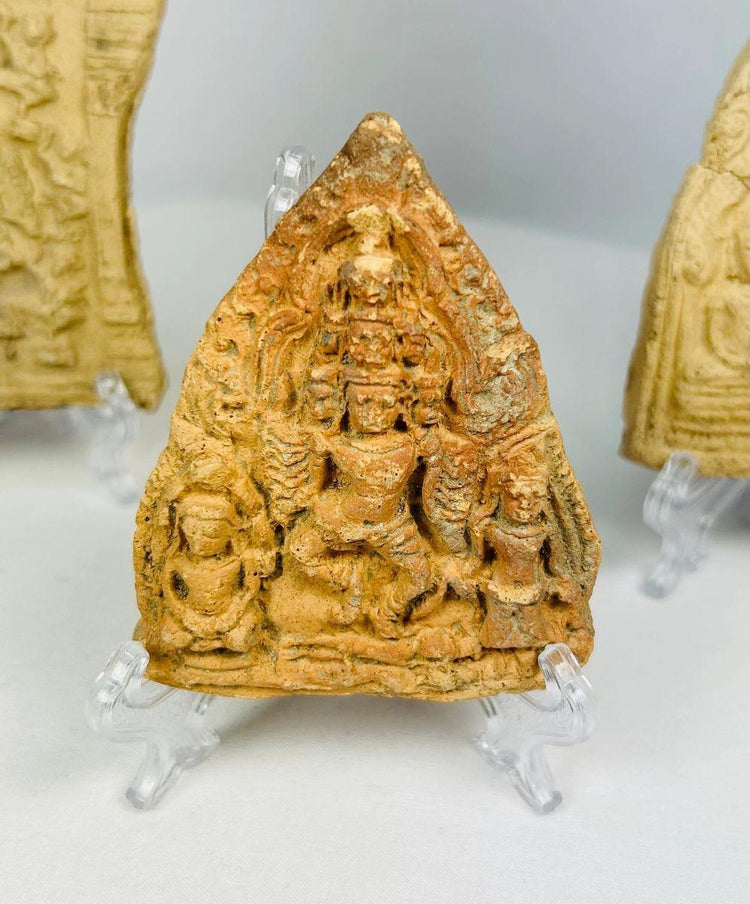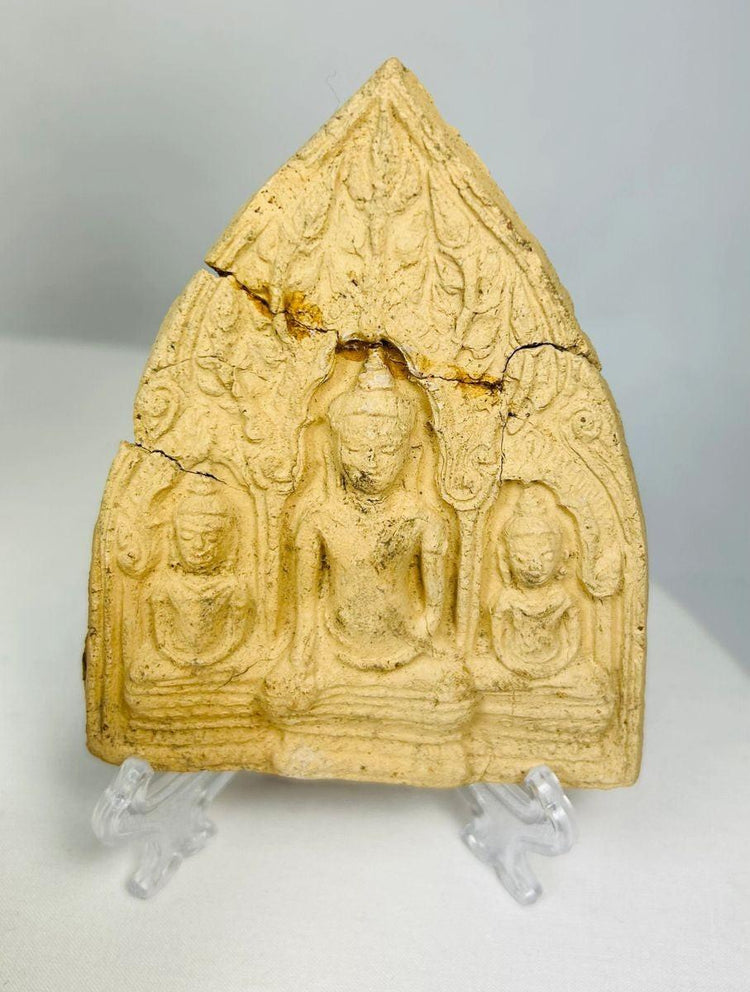Southeast Asian | Terracotta Buddhist | Votive Plaques | Circa 14th-18th Century
Description
More
Less
Historical Context & Origin
Region: Thailand or Cambodia, Southeast Asia
Material: Terracotta (natural clay)
Period: 14th–18th Century CE
Description
This remarkable collection of terracotta plaques represents exquisite examples of devotional Buddhist art from Southeast Asia. Each plaque is finely carved with depictions of Buddha and Bodhisattvas seated in meditative postures, framed by floral and architectural motifs symbolizing enlightenment, compassion, and divine protection. Traditionally, such plaques were created as votive offerings, temple adornments, or protective amulets, reflecting the profound devotion and spiritual practices of Buddhist communities across Thailand and Cambodia during this era. The artistry of these plaques demonstrates both regional diversity and a shared cultural reverence for the sacred.
Features
- Intricate carved depictions of Buddha and Bodhisattvas
- Elaborate floral and architectural motifs symbolizing spiritual ideals
- Hand-formed terracotta construction with natural patina
- Subtle variations in iconography reflecting regional influences
- Surviving devotional artifacts with centuries of historical use
Cultural Significance
These plaques embody the artistic and spiritual traditions of Southeast Asian Buddhism between the 14th and 18th centuries. Used in temples, shrines, and as personal offerings, they served as tangible connections between devotees and the divine. Their presence today provides insight into the fusion of art and devotion, as well as the cultural exchanges that shaped Buddhist practice in the region.
Condition
The plaques exhibit natural patina, surface wear, and minor weathering consistent with age. Despite this, they remain well-preserved, with their carved details clearly visible. These signs of aging not only authenticate the collection but also enhance its aesthetic and historical character.
Dimensions (approximate)
Largest plaque: 4.75 in
Age
Between 300–600 years old
Learn More
Compare related museum-held works: Ivory Carving – British Museum
Explore similar pieces: Eastern Antiquities & Cultural Relics – Relic And Rarity
Description
Historical Context & Origin
Region: Thailand or Cambodia, Southeast Asia
Material: Terracotta (natural clay)
Period: 14th–18th Century CE
Description
This remarkable collection of terracotta plaques represents exquisite examples of devotional Buddhist art from Southeast Asia. Each plaque is finely carved with depictions of Buddha and Bodhisattvas seated in meditative postures, framed by floral and architectural motifs symbolizing enlightenment, compassion, and divine protection. Traditionally, such plaques were created as votive offerings, temple adornments, or protective amulets, reflecting the profound devotion and spiritual practices of Buddhist communities across Thailand and Cambodia during this era. The artistry of these plaques demonstrates both regional diversity and a shared cultural reverence for the sacred.
Features
- Intricate carved depictions of Buddha and Bodhisattvas
- Elaborate floral and architectural motifs symbolizing spiritual ideals
- Hand-formed terracotta construction with natural patina
- Subtle variations in iconography reflecting regional influences
- Surviving devotional artifacts with centuries of historical use
Cultural Significance
These plaques embody the artistic and spiritual traditions of Southeast Asian Buddhism between the 14th and 18th centuries. Used in temples, shrines, and as personal offerings, they served as tangible connections between devotees and the divine. Their presence today provides insight into the fusion of art and devotion, as well as the cultural exchanges that shaped Buddhist practice in the region.
Condition
The plaques exhibit natural patina, surface wear, and minor weathering consistent with age. Despite this, they remain well-preserved, with their carved details clearly visible. These signs of aging not only authenticate the collection but also enhance its aesthetic and historical character.
Dimensions (approximate)
Largest plaque: 4.75 in
Age
Between 300–600 years old
Learn More
Compare related museum-held works: Ivory Carving – British Museum
Explore similar pieces: Eastern Antiquities & Cultural Relics – Relic And Rarity
You May Also Like


























